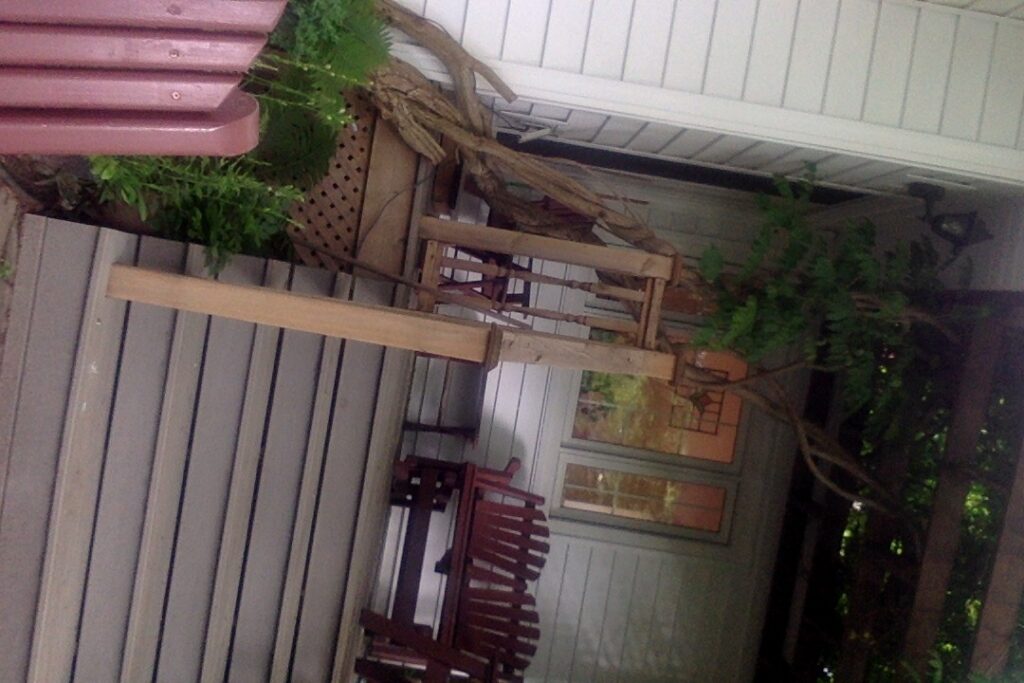
Our Wisteria hardly bloomed this year. I need to find someone who can properly trim and tie up the wisteria on our Purgola. Can you do that or recommend someone (I tried to use the web list unsuccessfully)?
I have tried to watch and follow u-tube pruning instructions, but don’t get good results and think that I am not doing it right. We had Davey inject/fertilize which may have countered blooming. I hope you can help me though i am in Hamilton instead of Toronto.
Thank you for your question. Toronto Master Gardeners do not provide gardening services and are unable to make specfific recommendations for professional services. We recommend the Landscape Ontario Website https://landscapeontario.com/search which provides recommendations based on service required and location where you reside.
The following information from our gardening Guide on “How to get a Wisteria to bloom” provides good information that will assist you with pruning.
Pruning Principles
The most reliable way to ensure a wisteria blooms each season is to establish a regular pruning regimen. Improper pruning may overly stimulate vegetative growth at the expense of flowers.
Dedicated pruning twice during a season not only keeps this robust vine confined to its support structure, when done properly, it establishes a framework of horizontal branches and promotes the formation spurs at controlled intervals. Flower buds are produced on spurs and pruning induces spur formation.
With correct pruning the number of spurs will increase over time until a significant cluster of flower buds is formed. Spurs usually live for eight to ten years before rotting and falling off to be replaced by others. Even wisterias that are allowed to ramble informally flower markedly better when spur-pruned.
Wisteria floribunda and W. sinensis buds are set on spurs in the fall and bloom in the spring so cutting any of these unnecessarily will compromise the number of flower buds.
Encourage spur growth by training vines
Horizontal branches are more likely to flower than vertical ones. Keep this in mind when establishing the basic framework of a young wisteria. Aim to have a strong vertical stem, which serves as the main leader and direct side branch (lateral) growth at a 45-degree angle. Pinch off the main leader when it reaches the desired height. Do not allow suckers to sprout off the main leader or grow out at ground level. Lateral stems should be spaced at least 18 inches (45cm) apart to allow room for the blooms to dangle down without running into each other.
The end goal in pruning is to allow the permanent framework branches to extend each year by half the annual growth and for laterals to become flowering spurs.
A twiner is a long, straight, thin branch; about as thick as a pencil at the thickest and it will grab hold of what ever it finds and then twine around it. In the summer, prune these back to two buds. This is spur-pruning and stimulates creation of more spurs that will be covered in bloom in spring
All other lateral shoots (runners) are either cut off completely (and there are lots and lots of these) or shortened to about four or five leaves (6in or 15cm) if they are wanted for flower production.
The only thing on a spur should be plump flower buds. Any shoots coming off the spur should be removed. These shortened shoots will become flowering spurs.
Summer Pruning
In mid July, early August or two months after flowering, prune all the twiners that sprouted from the basic framework back to one or two buds. Each of these cuts will produce a spur covered with bloom. Lateral shoots are pruned to within 4 to 6 leaves (6in or 15cm) of the main branches again to form flowering spurs.
More information can be found in the link to the Gardening Guide: https://www.torontomastergardeners.ca/gardeningguides/how-to-get-wisteria-to-bloom-a-toronto-master-gardeners-garden-guide/
You may want to consider The Halton Master Gardener group as a resource in your area.
https://haltonmastergardeners.com/category/hamilton/
Best of luck with your pruning and enjoyment of your Wisteria.

